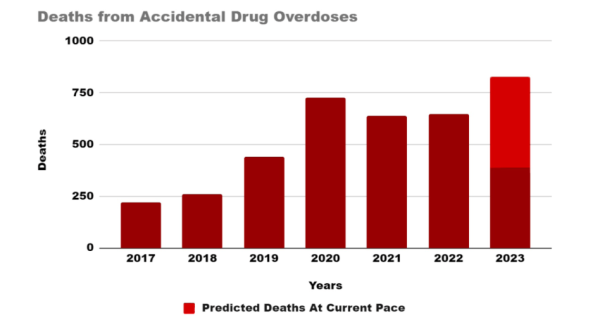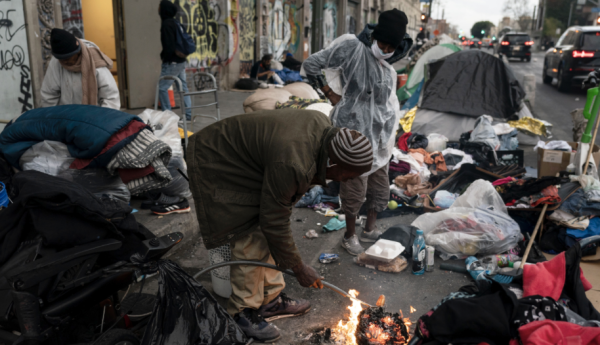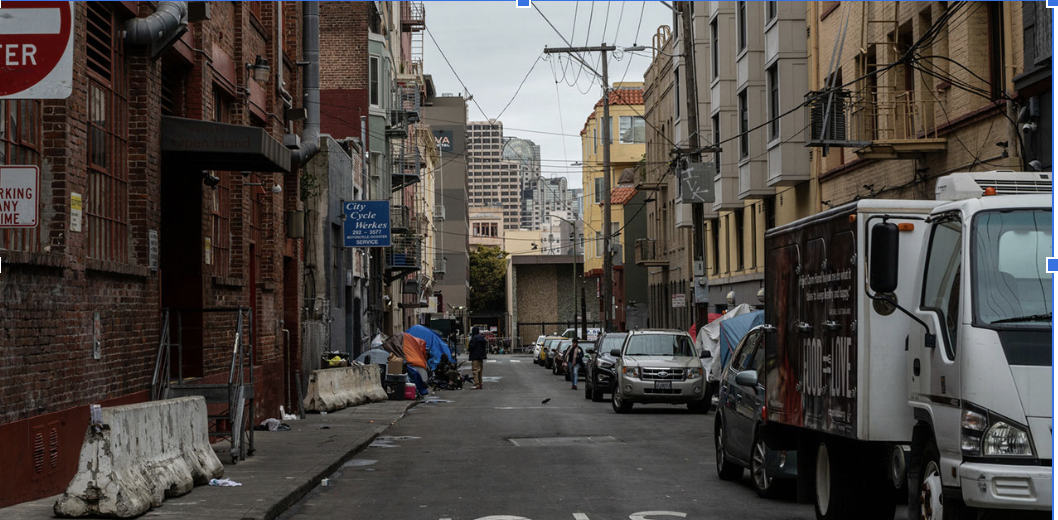San Francisco used to be known as a place of progress and the crown jewel of the Bay Area. A strategic economic and beautifully scenic location due to its position at the gates of a large coastal bay, San Francisco first rose to prominence during the gold rush of 1849. When San Francisco’s Golden Gate Bridge was erected, it came to be seen as a symbol of power and progress of the United States, being the largest suspension bridge in the world at the time.
Being the symbol for the “American Dream” and of booming opportunity, San Francisco was built from miners and people from all corners of the world seeking opportunity to strike it rich through various different jobs. But now, San Francisco is viewed by some as a mismanaged, derelict city that many corporations are pulling out of due to safety concerns.
A notable example is the Union City Mall, where a considerable number of stores and restaurants have been closing, the final straw being Nordstrom leaving causing Westfield, a group that operates many shopping centers and malls worldwide, to close down the entire mall. This was no doubt a heavy blow to San Francisco, especially with teenagers, as this location was a designated hang-out spot and safe refuge from inner city problems.
Ernest Hemingway, cautious of the slippery slope of bankruptcy in his book The Sun Also Rises, said that personal bankruptcy, like that of the character Mike in the novel, happens “Gradually, then suddenly.” Likewise, the Golden City did not decline overnight. Several factors like drug use, wealth inequality, and homelessness prodded at the weak facade of the city. With a lack of government action chiseling away at the root causes of San Francisco’s problems, the city gradually, but then suddenly, lost its prestige, displacing the city and its residents further into decline.
According to San Francisco Chronicle, the populous city’s fatal drug overdose rate was 8.7 per 100,000 residents as of January 2023, which is higher than California’s rate of just 2.4 (a whopping three times more than most California cities). It’s really no surprise why San Francisco has gotten to the point where drug use is practically destroying the city from the inside out. Addiction is spiraling out of control, causing more turmoil and volatility.

Another issue San Francisco faces is its staggering wealth inequality. As stated by SFGATE, the top 1% of households in Silicon Valley hold 48 times more of the total wealth than the bottom 50%. San Francisco is among the wealthiest cities in the entire U.S., hence why it’s also trending towards becoming one of the most financially divided and imbalanced.

San Francisco’s largely disproportionate economy is also a major contributor to the city’s rise in homelessness. Many people are found living on the streets where they can freely use drugs, suggesting that the city’s epidemic of homelessness is largely the result of drug addiction.

The politics of San Francisco is also abysmal, tying its hands behind its back when it comes to responding to these problems. San Francisco is a charter city, meaning it runs on a charter, or a document similar to a constitution, that allows for greater governance of a city and grants it “supremacy over municipal affairs”, freedom to control whatever relates to the city. San Francisco’s charter has gone over multiple amendments, but the most damaging ones have been the amendments weakening the authority of the mayor. An example of this weakening of authority can be seen in San Francisco’s Board of Supervisors, which is an 11 person board that approves the city’s budget and writes resolutions on San Francisco’s opinion on bills being passed. They also deal with neighborhood planning, and can make permits in various different areas, such as business or transit. However, significantly they can not appoint leaders to commissions or actually drafting the budget. This can lead to gridlock situations where the board of supervisors has a vision and the mayor has another one, such as Mayor Breed’s housing production plan.
Conflicts between these two parties are detrimental to the city, leading to contradictory statements and more critically, inaction. But when the city does take action, it does swiftly and decisively like in The COVID-19 Pandemic and Mayor Breed’s response to it. Calling press conferences, listening to health officials, and posting on social media to tell the public to stay at home, San Francisco’s response to the pandemic was extremely impactful compared to other cities. The city was one of the first to limit public gatherings after the discovery of COVID-19, and its speedy set of actions saved the city from most of the harshness of the attack. San Francisco’s politics are limiting its response, as it does have politicians who can work in a crisis and can help the city but can’t because of the separations in power and control.
These problems may look trivial on paper, but they are affecting real people whose lives have been uprooted by inaction and those in power not addressing these problems.
An anonymous author describes the pain of her current situation by saying
Her life has been a struggle, with her having to make the difficult decision to send her children to Mexico for a time, before realizing that they would be better off with her. She wants to become a maternity nurse and all she wants is to get a constant job to pay rent and support her kids, which proves to be difficult to find in the city.

While San Francisco may never fully bounce back from all of these crises, healing through increased attention from lawmakers could bring the city to a better state than it currently is. For example, the overdose rate from drugs in the city can be better handled by providing aid for those going through withdrawals after an arrest, and treating the cause of drug use instead of policing those who are already addicted.
Another way the city could be preventing deaths from overdoses is by making Narcan, also known as naloxone, readily available to the public. Narcan quickly reverses the effects of an opioid overdose by binding to chemical receptors that an opioid would attach to, preventing the serious risks of an overdose. San Francisco is already headed in the right direction in combating some of these problems like homelessness, with the passage of new laws prioritizing multi-story housing instead of single-family homes.

All told, it’s important to keep in mind that San Francisco is not unique in these problems, with drug use, crime, and homelessness rattling other large urban cities in the United States, such as Portland, Oregon, and New York City. It’s true that the decline of San Francisco has been years in the making.
Instead of accepting the status-quo as the new normal, a new political will is no doubt needed to directly address income inequality, drug addiction, the housing crisis and homelessness, crime, and, ultimately, the fading reputation of San Francisco as the once described “Golden City” of the Bay Area.


